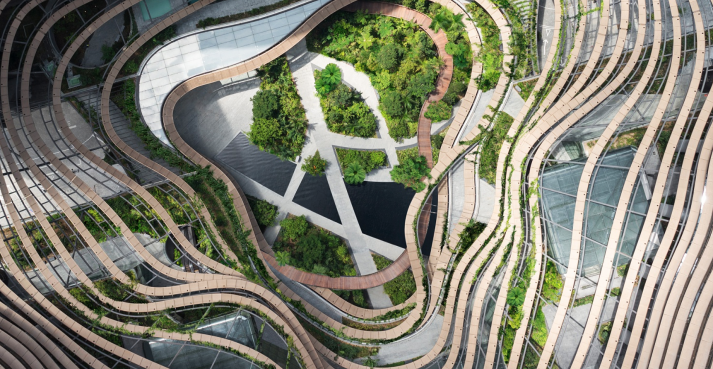The Buzz on Landscape Design
Landscape Design for Beginners
Table of ContentsLandscape Design for DummiesOur Landscape Design IdeasHow Landscape Design can Save You Time, Stress, and Money.Landscape Design Fundamentals ExplainedA Biased View of Landscape Design
Formal style theme. Debt: Gail Hansen, UF/IFAS The lawn is an expansion of the home where a selection of tasks happen. A lawn can generally be divided into three locations: public (the front lawn), private (the backyard), and service (usually the side yard). The area of activity locations depends primarily on the sort of area, the dimension of space needed, the kind of activity, and the desired closeness to various other activities and frameworks.The outdoors wall of your house commonly serves as the first wall or beginning factor of an outside room. Incompatible uses need to be separated, and associated tasks, such as food preparation and dining, need to be created to make the backyard extra efficient and satisfying. When utilizing hardscape to produce spaces, use construction material comparable to that utilized in your home for connection from the house right into the garden.
Connected areas. Credit Score: Gail Hansen, UF/IFAS Making use of similar hardscape attributes and duplicating plants pulls the eye around the garden.
The 45-Second Trick For Landscape Design

For psychological convenience plants are made use of as physical or suggested barriers for privacy and safety. Physical obstacles block both the view and accessibility to a space and include fencings, wall surfaces and plant bushes. Suggested barriers, commonly low expanding plants, block gain access to but not the sight (Figure 9). Various other functions of plants include cleaning up the air, protecting against disintegration and soil loss, keeping wetness in the soil, and returning raw material to the soil.
Physical and suggested barriers. Credit History: Gail Hansen, UF/IFAS For these factors, the kinds of plants to be used (such as trees, bushes, or groundcovers) must be chosen in the onset of preparation (Landscape Design). Plant kinds are chosen for their functional abilities to ensure that their future purpose read this article and required space can be considered at the exact same time

Examine This Report on Landscape Design
Each plant mass is in front of, behind, or alongside, another mass. Number 11. Straight plant layers. Credit Rating: Gail Hansen, UF/IFAS Figure 12. Vertical plant layers. Landscape Design. Debt: Gail Hansen, UF/IFAS Repeating plants within a mass and repeating masses with comparable plants links the garden with each other. The private plant characteristics have to be considered to efficiently layer and mass plants.
All plant compositions start with the primary structure plants, the big, primarily evergreen history plants-such as the trees and large shrubs. These plants separate or enframe areas, regulate the dimension of the area, and give the beginning point for picking the proper characteristics of the second layer, midground plants, for massing and infill.
Important factors in the garden must be highlighted by the use special plants, distinct structures, or yard ornaments. Noting thresholds or entryways to rooms can be done with entrances, arbors, and steps, or with making use of special and colorful plants. The type and/or design motif of the yard will commonly help establish the crucial factors and how they need to be highlighted.
Other important locations in the lawn are centerpieces, which is utilized to aesthetically arrange a designed area. The type of prime focus typically relies on the seeing viewpoint. Various viewpoints or perspectives can disclose you could try this out various structures in the landscape that may require a selection of prime focus. Contrasting texture, shape, dimension and shade will catch and hold the eye.
Landscape Design Fundamentals Explained

Plant kinds. Credit Score: Gail Hansen, UF/IFAS After type, texture is the following leading attribute of a plant; crude, tool and fine appearances can be utilized for contrast and emphasis in the landscape.
The pleasant scent of plants, the audio of wind in the trees, the audio and appearance of water, and the shades and structures of sculptures, pots and garden furniture all include in the experience of the yard. One information that is frequently neglected is the impact of light on the appearances of the plants.

The Greatest Guide To Landscape Design
It is necessary to know the eventual mature size of plants so they can be placed in the right area and spaced appropriately when they are set up. Giving plants room to expand is a difficulty because the usual mature dimension is generally based on optimal growing conditions and the ecological conditions of a site may trigger a plant to grow larger or remain smaller.